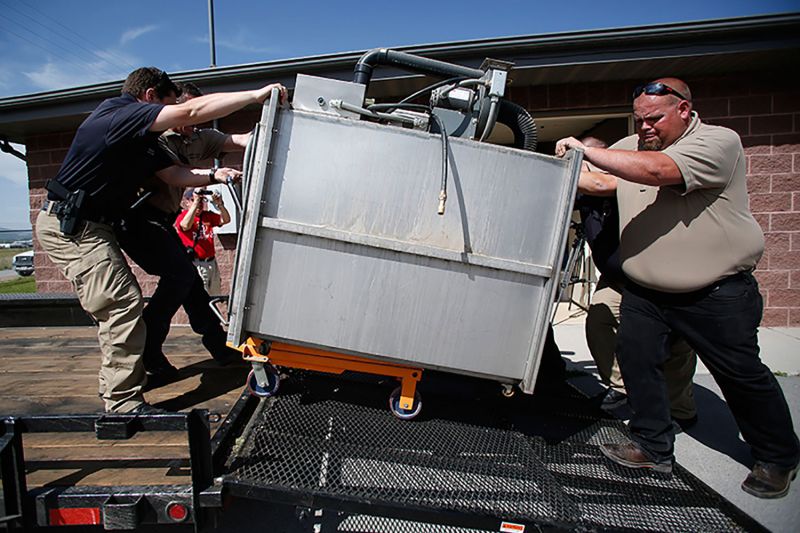Humane World for Animals statement on gas chambers
Humane World condemns the use of gas chambers for euthanasia of animals

When shelters find themselves in the position of having to euthanize an animal, it is incumbent upon them to ensure that the death is as humane as possible. Humane World for Animals, the Association of Shelter Veterinarians, the National Animal Control Association, and all other national animal welfare organizations agree that direct injection of approved euthanasia drugs (referred to as Euthanasia by Injection, or EBI), by which the animal quickly loses consciousness without experiencing pain or distress, is the most humane method of euthanasia currently available. Lesser alternatives like carbon monoxide or carbon dioxide gas chambers (gas chambers), which can virtually never provide a stress and pain free death, must therefore never be used in shelter settings.
Gas chambers cannot provide humane euthanasia for shelter populations. Often the animals euthanized in shelters are old, young, ill or injured and none of these animals can be humanely euthanized in a gas chamber. Old, ill, injured or otherwise circulatory compromised animals may suffer from medical conditions that delay the effects of gas, causing them to experience distress prior to unconsciousness. Neonatal animals are resistant to hypoxia and can survive much longer without oxygen than adults, making the use of inhalants like carbon monoxide ineffective. Some small mammal species such as rabbits and guinea pigs share this quality, making them inappropriate for gas chamber euthanasia regardless of their age. Even healthy adult dogs and cats will suffer stress just by being placed in the unfamiliar environment of a gas chamber, and may become panicked by the sights, sounds and smells of the equipment, particularly in the presence of other animals. For these reasons, gas chambers cannot be relied upon to consistently produce a humane euthanasia for shelter animals, and their use cannot be condoned.
Gas Chambers Pose Grave Dangers to Staff: A common fallacy is that the use of gas chambers is safer for staff members than EBI because it avoids direct handing of animals and is more palatable than directly administering a fatal drug. In fact, the opposite is true – the use of gas chambers actually poses greater physical and psychological harm to staff. Staff must still handle, transport and place fractious and fearful animals into the chamber, and as such are at risk of bites and scratches. Even otherwise friendly, tractable animals may react adversely when forced into a small, dark, confined space like a gas chamber. Moreover, there is no evidence that euthanasia-related psychological stress is any less prevalent in caretakers euthanizing with a gas chamber than with EBI; if anything, staff report their stress is greater when the chamber is used instead of EBI. Perhaps most important, the use of the gas chamber equipment itself poses a grave risk to caretakers, as animal care workers have been injured and killed by malfunctioning chambers.
Gas Chambers are More Costly: A gas chamber must be commercially manufactured and properly equipped and maintained or its operation will be painful and inhumane even for healthy adult dogs and cats. Studies have proven that it is actually more expensive to operate a gas chamber within the strict operational parameters required than it is to purchase and use approved euthanasia drugs. For the reasons cited above, when euthanasia must be performed in a shelter setting, EBI is the only acceptable humane method. In states where shelters have the ability to acquire euthanasia drugs directly, all shelters still using a gas chamber should convert to EBI immediately. Where direct licensing is not yet available, Humane World for Animals will partner with the Humane Veterinary Medical Alliance (HumaneVMA) in an effort to help shelters secure access to euthanasia drugs until a direct licensing measure is passed. Humane World for Animals stands ready to provide necessary training, financial support and other assistance to any shelter committed to converting from use of a gas chamber euthanasia to EBI.
For questions that are not answered here, contact our shelter services experts.
The information in this statement replaces any and all previous recommendations regarding Humane World standards for euthanasia methods. Last updated 8/15.


